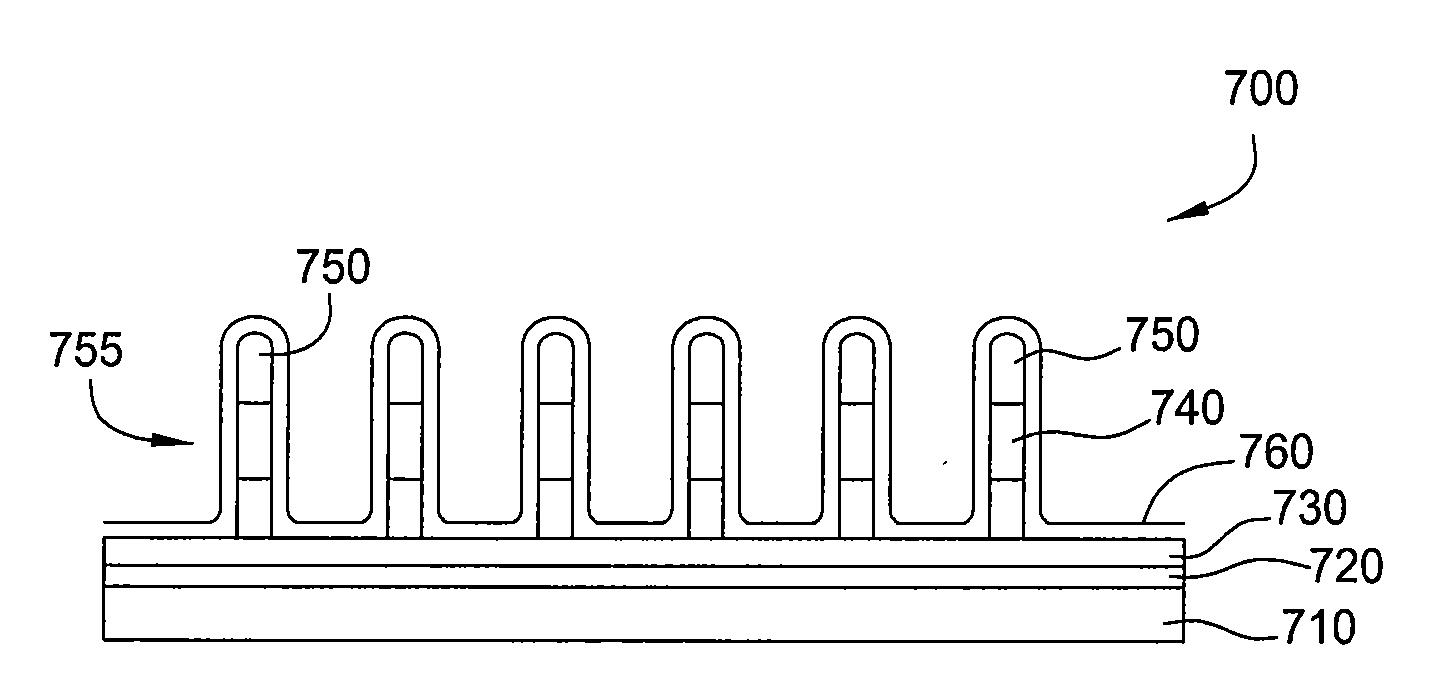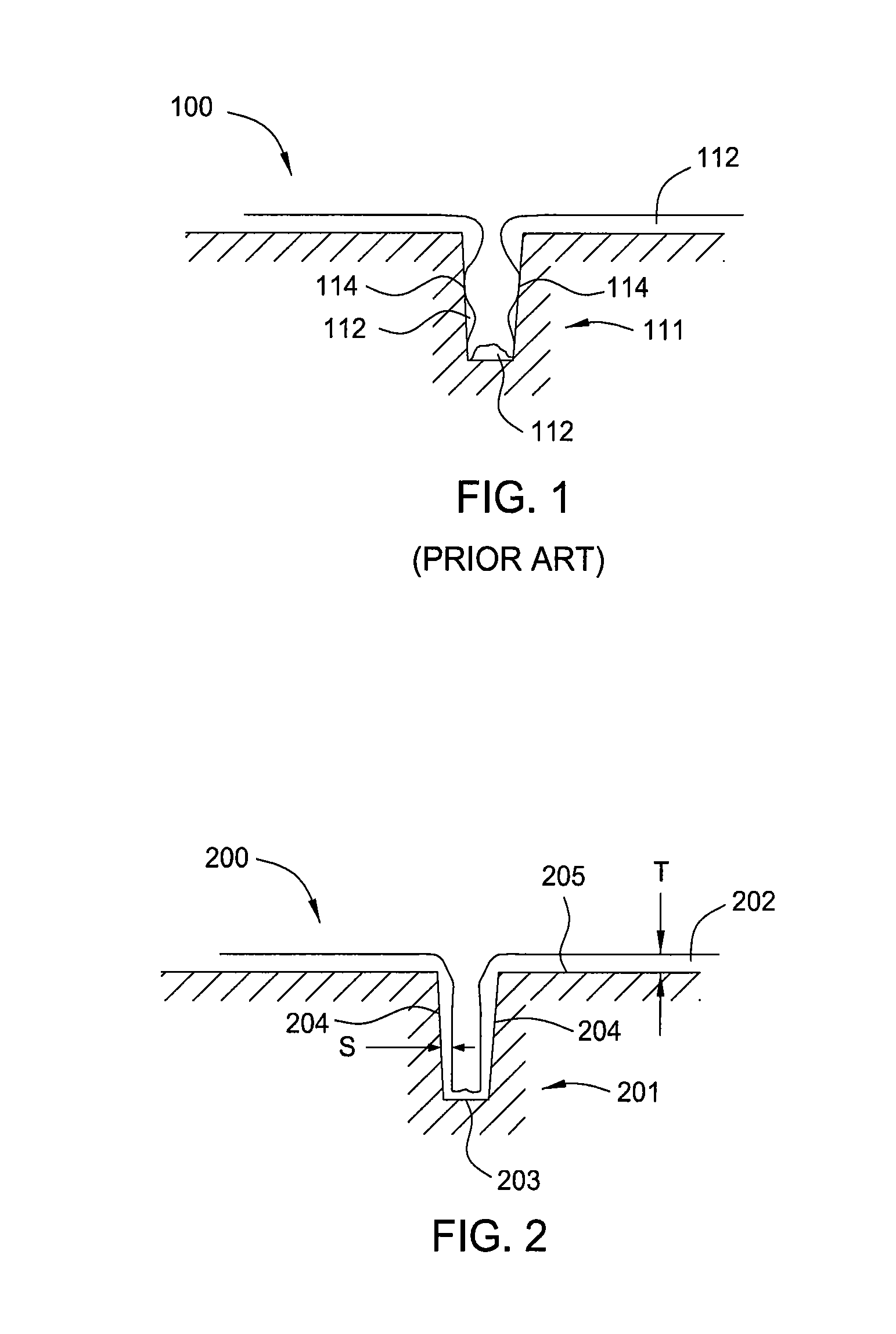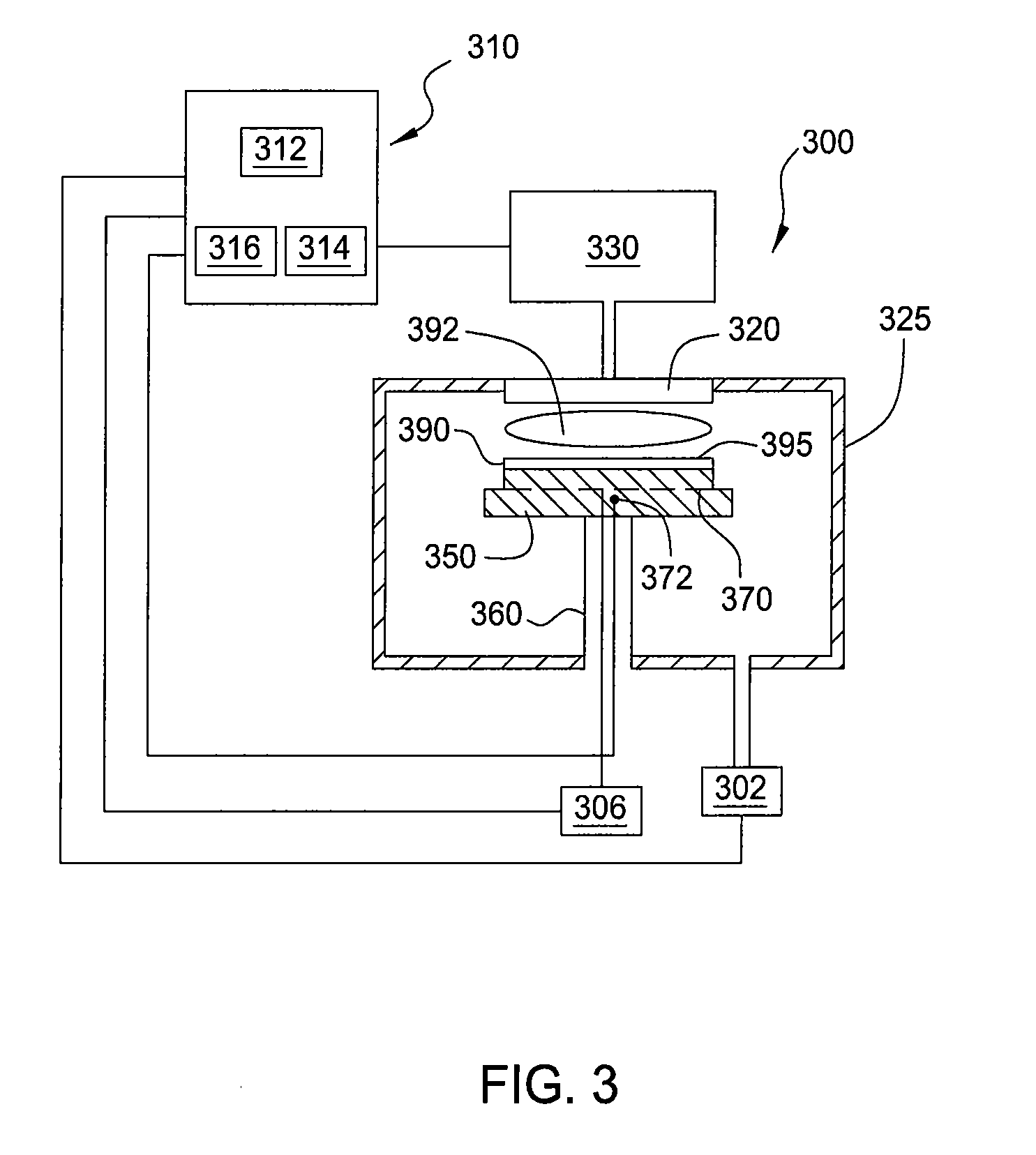Method for Depositing Conformal Amorphous Carbon Film by Plasma-Enhanced Chemical Vapor Deposition (PECVD)
a technology of conformal amorphous carbon and chemical vapor deposition, which is applied in the direction of chemical vapor deposition coating, coating, metallic material coating process, etc., can solve the problems of low-k dielectric material devices with little or no surface defects or feature deformation problems, and increase the likelihood of defects on the substrate surfa
- Summary
- Abstract
- Description
- Claims
- Application Information
AI Technical Summary
Benefits of technology
Problems solved by technology
Method used
Image
Examples
Embodiment Construction
[0024]Embodiments described herein generally provide methods for depositing amorphous carbon materials (a-C:H) with improved conformality in a chemical vapor deposition system. Conformality of a layer is typically quantified by a ratio (which may be represented as a percentage) of the average thickness of a layer deposited on the sidewalls of a feature to the average thickness of the same deposited layer on the field, or upper surface, of the substrate. Layers deposited by the methods described herein are observed to have a conformality of greater than about 30%, such as 70% or greater, about 7:10 or grater, such as about 80% or greater, about 4:5 greater, to about 100%, about 1:1. For example, the prior art non-conformal amorphous carbon layer 112 as shown in FIG. 1 would be considered to have 0% conformity due to the lack of a layer deposition on the sidewalls 114.
[0025]In particular, methods are provided for improved conformal deposition of an a-C:H layer. Conformal deposition ma...
PUM
 Login to View More
Login to View More Abstract
Description
Claims
Application Information
 Login to View More
Login to View More - R&D
- Intellectual Property
- Life Sciences
- Materials
- Tech Scout
- Unparalleled Data Quality
- Higher Quality Content
- 60% Fewer Hallucinations
Browse by: Latest US Patents, China's latest patents, Technical Efficacy Thesaurus, Application Domain, Technology Topic, Popular Technical Reports.
© 2025 PatSnap. All rights reserved.Legal|Privacy policy|Modern Slavery Act Transparency Statement|Sitemap|About US| Contact US: help@patsnap.com



